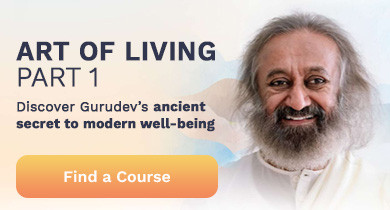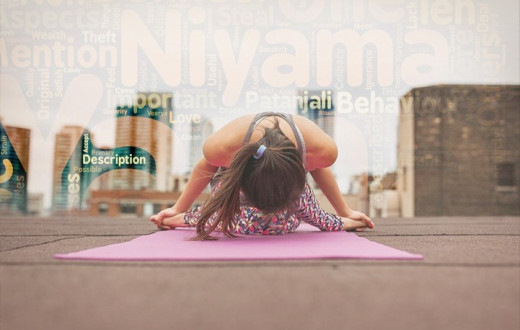By Sejal Shah | Posted: December 17, 2018
Is your yoga practice limited to yoga poses? These 14 yoga tips will help you elevate your asana practice to a holistic mind-body-spirit experience.
Yoga practice is a continuous evolution. While it takes just a few classes to learn the basic poses, or asanas, over years of practice, you grow and change as a practitioner of yoga. Here are some tips to help improve your evolving practice.
1. Start with gentle warm-ups. Once your body is sufficiently warmed up, start with asanas. Transition slowly, with ease and fluid motion.
2. Learn to do asanas systematically. Each asana can be done in four important steps - the starting position, moving into the posture, holding the posture, and then releasing the posture. Move gently and gracefully from one step to the other. Give priority to learning each pose without straight away going into the sequences.
3. Allow your body to speak: if you listen, it will tell you the difference between pain and a good stretch. Initial muscle aches are a good sign: they mean that your body is changing. However, finding your limits is an exercise in identifying the right balance between effort and ease. It is important to not overexert yourself and burn out on the activity. Do as much as your body allows you to do. Make a gentle effort to go slightly beyond your limits, but do not force yourself into a position.
4. Don’t compare yourself with others, and stay with your own experience. Once you are comfortable, you may practice your asanas with your eyes closed. This will allow you to go deeper into your asana.
5. Have patience. It takes time to improve flexibility, build strength, and to correct imbalances and misalignments.
6. Flexibility is not the ultimate goal. Pay more importance to the correctness of asanas, rather than whether you can touch your toes. For example, it is important to bend less but correctly than to bend more but incorrectly. This will also help in preventing injuries. It is very important to even not get stuck in corrections as in the words of Gurudev Sri Sri Ravi Shankar, “Each asana should be done keeping in mind that the goal of this is not the correctness of the posture but to experience infinity.”
7. Do asanas gracefully, like you’re moving in a slow, rhythmic, sequential dance. Let your body, breath, and mind move in unison.
8. Coordinate your movements with your breath. This will increase your awareness, calm your mind, and improve your asana practice. Most often, we inhale when expanding or stretching, and exhale when contracting or folding. While holding the posture, breathe easily, slowly, and deeply with your abdomen, either using normal breath or Ujjayi breath. When inhaling, let the abdomen effortlessly push out; when exhaling, let it return gently. Make your awareness and your breathing your companion. This is how your asana practice is different from aerobics.
9. When in a pose, remain steady and mentally relax. Notice your breath as well as your facial expression, as they will both change when you are pushing yourself beyond your limit. If you find yourself doing so, gently adjust. Let your breath relax your body and quiet your mind. Finally, be still so that the experience of infinity dawns in you. In the whole of the Patanjali Yoga Sutras, he mentions about asana only three times. And in just three sutras, he defines, explains how to do and what is the real benefit or effect or purpose of the asana.
Definition of asana:
“Sthira Sukha Asanam” (II Sūtra 46)
sthira = steady; sukham = comfortable; asanam = posture.
“That posture which is steady and comfortable is āsana.”
“The posture in which you can experience stillness and bliss is asana.”
How to do and what is the purpose of asana:
“Prayatnashaithilyanantasamapattibhyām’’ (II Sūtra 47)
prayatna = effort; shaithilya = letting go of; ananta = infinite; samapattibhyam = uniting with.
“Letting go of the effort to unite with the infinite.”
“Perfection in an asana is achieved when the practitioner lets go of all the effort to perform it and merges with the infinity.”
Benefit or effect of the asana:
What is the benefit of asana:
“Tato dwandanabhighataha’’ (II Sūtra 48)
tato = then; dwandwa = duality; anabhighataha = rooted out.
“Then, all the duality in you is rooted out.”
“Then, the practitioner remains undisturbed by dualities.
10. Let your asana practice be an offering—a prayer. Practice asanas with awareness, inwardness and with a feeling of honoring your body. This will bring an increased grace and beauty to your asanas regardless of your level of flexibility and perfection in alignment. Pay attention to what you are doing with your body and mind and what you are feeling in your body and mind.
11. Though you want to be perfect, accepting imperfection is key. While improving on asana practice is important, don’t get stuck in a perfectionist mindset. Given that every body is a different body, there are no set benchmarks for perfection in asana practice. On any given day, understanding, honoring, and accepting your unique body and enjoying your asana practice is most important.
12. Gradually add more asanas. When you have learned a few basic asanas properly, practice their variations and continue to build on your practice by learning more asanas. This will help improve the quality of your asanas and your overall practice.
13. The more, the merrier. Practice asanas with a buddy or group. Helping and supporting each other in the initial stages of developing your practice makes it more enjoyable.
14. Make it a complete practice. Relax for some time in corpse pose or yoga nidra after you finish your asanas. Follow this up with pranayama and meditation practice.
Happy Practicing!
Are you interested in becoming a 200 H certified yoga teacher?
Sri Sri School of Yoga offers the most traditional (scripture-based), classical and authentic teacher training programs globally. Its certification is Yoga Alliance compliant.
To find out more about teacher training offered in North America, click here or talk to a Yoga Teacher Training Advisor. Click here to schedule your appointment!
Sejal Shah, E-RYT 500 Sri Sri Yoga Teacher, YACEP, C-IAYT, Meditation Teacher, Happiness expert, NYU Post Graduate Medical School approved Yoga-CME retreat facilitator, Mind-Body Wellness Writer, Homeopath. She can be followed on YouTube, Instagram, Twitter, and Facebook.





























